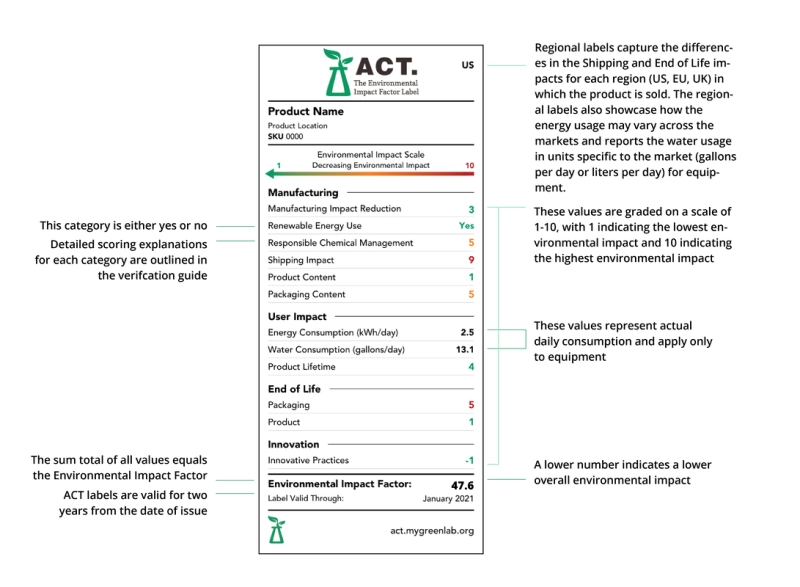How Equipment Vendors Can Help Address the Carbon Impact of Biotech and Pharma
Stepping up the efficiency of product development, manufacturing, and support services
The non-profit climate impact organization My Green Lab recently released the 2023 report titled “The Carbon Impact of Biotech and Pharma: Collective Action Accelerating Progress to the UN Race to Zero.” The report focuses on the three types of emissions generated by the biotechnology and pharmaceutical industries, pointing to group 3 emissions as the most significant contributor to total climate change emissions. Group 3 includes upstream purchasing activities and services—the domain of instrument and service providers, among others. What does this mean for these industry sectors as a whole? Product developers and manufacturers must continue to make positive gains towards responsible materials and practices to help biotech and pharma companies in turn achieve their climate change objectives.
Reporting carbon impact data
 The biotech
and pharma industries are significant contributors to carbon emissions directly
linked with climate change. As such, these industries must continue to be
proactive in addressing the problem and contributing to the global climate
solution.
The biotech
and pharma industries are significant contributors to carbon emissions directly
linked with climate change. As such, these industries must continue to be
proactive in addressing the problem and contributing to the global climate
solution.
My Green Lab, a leading non-profit organization promoting sustainability in science, conducts periodic studies looking at data from Intercontinental Exchange (ICE). The first to quantify Scope 1, 2, and 3 emissions across the full value chain of the biotech and pharma industries, these studies provide compelling data analysis and suggest actions to further address the climate crisis. Through awareness and accountability, the goal is to achieve measurable objectives in alignment with the UNFCCC’s Race to Zero campaign and the Paris Climate Agreement.
What this year’s data indicate
This year’s study incorporated data from 226 publicly listed companies and 147 privately-held companies, representative of the greater biotech and pharma industries. The largest companies by revenue have established zero carbon goals and are actively working to reduce Scope 1, 2, and 3 emissions. However, 90% of the 91 companies analyzed have not established climate commitments that align with a 1.5 °C increase.
The total carbon impact of the combined industries continues to rise annually, from 3.9% in 2021 to 5% in 2022. Although part of this apparent increase comes from more accurate measures of carbon emissions, the data continues to trend upward, with the largest sector arising from Scope 3 emissions—which is 4.6-fold greater than Scope 1 and 2 emissions combined.
Of those analyzed, the largest companies by revenue show they are making significant inroads into adopting the Race to Zero objectives. This translates to 63% of the sector by revenue and an increase of 18% over last year’s percentage by revenue.
Scope 1 emissions are those originating directly from owned or controlled sources. Scope 2 includes carbon emissions from purchased energy consumed by the reporting company. Scope 3 emissions, on the other hand, arise from indirect emissions upstream or downstream in a company’s value chain. Scope 3 typically supersedes Scope 1 and 2 emissions combined, a result that continues to be seen with the biotech and pharma industries.
Addressing Scope 3 emissions
The vast majority of Scope 3 emissions stem from purchased goods and services acquired by the industry, which serves as a stark indicator for those companies producing equipment, consumables, and support services for biotech and pharma operations. The good news is these companies are increasingly seeking opportunities to help build sustainable practices and an environmentally conscious framework—both internal and external.
My Green Lab Certification
Support labs and contract research organizations (CROs) provide biological materials such as therapeutic proteins, DNA, cells, and other products to the biotech and pharma industry. These types of labs may perform assay development, drug screening, and clinical validation functions as well. A growing number of these labs have sought initiatives such as the My Green Lab Certification, which has emerged as the global gold standard for laboratory best practices and sustainability in science. Recognized for its alignment with the UNFCCC High-Level Climate Champion’s 2030 Breakthrough campaign, focus areas cover topics related to energy, water, waste, chemistry/materials, and engagement. The short-term objectives are to provide scientists and support staff with actionable strategies to help drive the achievement of lab sustainability goals. In this respect, My Green Lab Certification has helped over 2,000 labs worldwide, thus far engaging over 26,000 scientists from 45 different countries. The long-term objective is to foster significant carbon reduction by these labs and service providers—which will require stronger engagement by a wider global audience of labs and providers.
The ACT Environmental Impact Factor Label
The ACT Environmental Impact Factor Label is the world’s premier eco stamp of approval for lab products. The ACT program examines product design and manufacturing operations to ensure accountability, consistency, and transparency (ACT) in reporting environmental impact data. In the case of product development, this must include measurable data on materials, construction, and the use of sustainable practices such as recycling. In the case of manufacturing, the data may include details on the production site, the use of sustainable energy, and resource usage. The ACT Label (as seen below, credit: My Green Lab) goes beyond production to include packaging as well as energy use in storage and transportation.

The ACT program was designed by scientists and procurement specialists to provide clear third-party verified information about the sustainability profile of lab products. This, in turn, is meant to make it easier for customers to choose environmentally friendly products and thereby reduce the carbon footprint of lab supply chains.
Scope 3 Improvements in Biotech and Pharma
The biotech and pharma industry can make significant gains in reducing Scope 3 emissions by seeking out equipment and lab services providers that adopt sustainable practices. This may start by identifying those providers that express clear, tangible objectives for their own sustainable practices. After all, holding oneself accountable shows commitment to ideals that are ingrained in the company's DNA or mission. An important next step towards accountability and transparency is acknowledgment by a third-party evaluator, such as My Green Lab, and achievement of the ACT Environmental Impact Factor Label. Choosing ACT-labeled equipment and products is a strong approach to supporting carbon reduction while helping to motivate other providers to shore up their sustainability practices as well.
Summary
The biotechnology and pharmaceutical industries are key drivers of technology development and innovation. This includes everything from therapeutics that combat disease and save lives to medical devices and tools that enhance the quality of life. With this in mind, one could say that addressing climate change and fostering the health of our environment is intimately connected with nurturing the health of our global population.
The biotech and pharma industries will continue to grow with a projected compound annual growth rate of nearly 14% from 2022 to 2030. Considering the climate footprint of healthcare (of which biotech and pharma are a part) represents approximately 4.4% of global emissions, the future carbon footprint outlook appears challenging, to say the least.
Faster acceleration now towards the procurement of environmentally friendly lab equipment, consumables, and services will have profound effects that will translate exponentially as the biotech and pharma industries grow to new levels. Now is a critical time for equipment manufacturers to get on board the sustainability train, as the future destination will be defined by our collective actions.









